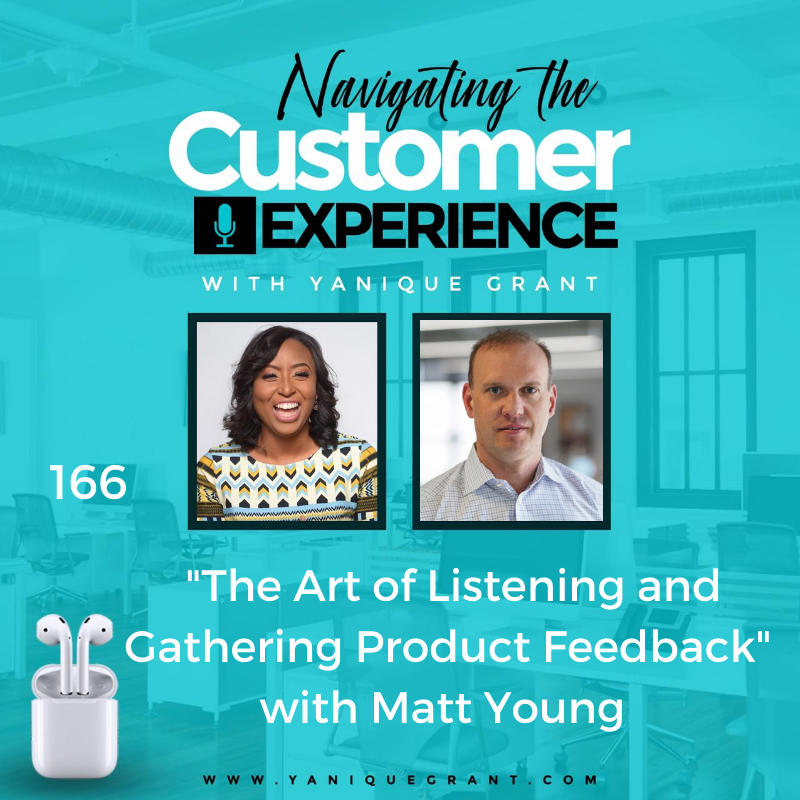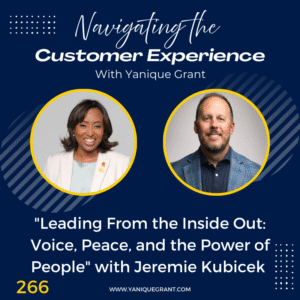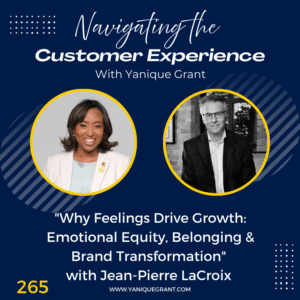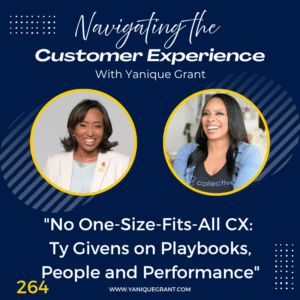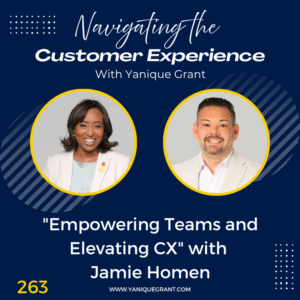Matt Young is the CEO of UserVoice, the first (and we think best!) product feedback and research tool for software companies around the world. Matt started his professional career as a software developer, right when web browsers were released. He developed innovative solutions on the web well before SaaS and Product Management were the ubiquitous terms that they are today.
Over his career, he has pushed for better ways to build software. And through all the changes in development methodologies, he has put the customer at the centre of everything his teams have built. This is what attracted him to UserVoice – an opportunity to make sure that teams building complex software solutions have direct access to the intended users – to make sure that the problems any company or development team are solving are actually worth solving.
Questions
- Could you share a little bit about your journey with our listeners, in your own words?
- Could you tell us a little bit about UserVoice? To the average listener that’s listening to this podcast, a little bit about the company, what does the company do? And what types of businesses do you primarily service?
- What about tips for improving feature request responses?
- Could you share with us what’s the one online resource, tool, website or app that you absolutely can’t live without in your business?
- Can you also share with us maybe one or two books that have had the biggest impact on you? It could be a book that you read a very long time ago, or even one that you’ve read recently that has really impacted you in a great way.
- If you could choose the best customer service or customer experience tip to give to our listeners who are business owners, what would be the most important tip that you would give them to ensure that their business is successful?
- Could you also share with us what’s the one thing that’s going on in your life right now that you’re really excited about? Either something you’re working on to develop yourself or your people.
- Where can they find you online?
- Do you have a quote or a saying that during times of adversity or challenge you’ll tend to revert to this quote, it kind of helps to get you back on track if for whatever reason you got derailed or you got off track.
Highlights
Matt’s Journey
Matt shared that he had a pretty ordinary software development career starting off as an individual software developer, and then moving into management. The thing that he had experienced while doing all that was that he would notice that product teams would ask engineering teams, which are big and expensive and complicated to build things and didn’t really have a good way to justify the reasoning behind that. He was really interested in hearing why customers thought what they were being asked to build was important, why it was an important problem to solve, why the solution they had in mind was a good one for them. And he just was really passionate about companies being connected to the users that they serve.
So, that’s kind of what brought him to UserVoice. He started out as the VP of Engineering at UserVoice but over the years, they’ve spun out a couple of other products and other companies, so the original founder is now the CEO of a sister company of theirs, it’s working on some parallel products, and UserVoice is his to run and build and all the responsibility and fun that comes with that.
What is UserVoice and What Does the Company Do?
Me: Could you tell us a little bit about UserVoice? To the average listener that’s listening to this podcast, a little bit about the company, what does the company do? And what types of businesses do you primarily service?
Matt shared that UserVoice is a software as a service product and it’s all oriented around making sure that you can gather any feedback that comes your way about your product, and that that feedback is available to the entire organization and can be analyzed and used to make products better. So, you guys have probably seen somewhere in your professional lives, a place where you had the opportunity to tell a team how they could make their product better, and that’s evolved over the years and the way that that happens. There are annoying ways to do it, like with pop-up windows and there’re really common ways to do it, like with surveys. But whether you’ve got a system in place or not, like people are providing feedback all the time, they’re doing that in the middle of a sales demo, for example, they’re saying what they do and don’t like about the product, they’re showing. They’re doing that through support tickets, by asking about a thing they want to try to accomplish that may not be supported yet.
So, UserVoice the product makes it really easy for anyone who’s in any position to hear customer feedback, either an employee of the company and support sales or success, or the customers themselves, have the ability to send whatever it is that’s worrying them to the company and then gives the product team the ability to aggregate what is usually a pretty big mountain of data into something that helps them relate their product development plans to the goals that the company currently has. So, the short story is they’re a software as a service product, but it’s a business analysis tool that’s built around product feedback.
Me: One of the things I was intrigued in getting your feedback on is, do you think customers should be driving the product roadmap?
Matt stated that that’s a question that they get asked quite a bit and the funny thing about that is that a lot of the traditional like stereotypical personality type of a product manager is a very creative type person and he thinks they can feel a little bit threatened by saying, “Hey, your customers should drive your roadmap.”
And they think, “Well, what about me? What about the innovation and creativity that we have to bring to bear?”
He thinks it’s a mistake to think of it as a black and white question like, should customers be driving a roadmap? “No.”
Should companies be creating a roadmap without customer input? “No, neither one is quite right.”
They need to use each other to really understand each other and meet to find common ground about the real problems that they’re trying to solve. So, he basically views customer feedback as research inputs into a roadmap that’s getting created. Not customers, like actually prioritizing things and steering the ship directly but they do have a lot of really valuable information for companies that can help them go to market with much greater success.
Tips for Improving Feature Request Responses
Matt stated that the typical product manager is getting asked to do a lot of things, they’re getting asked by their co-workers to change the product to close a deal, for example, customers obviously have a lot of input. One thing that really makes a lot of product managers nervous is the fact that they know that they need to say no to a lot of these things just because of resource constraints, or that what they’re being asked for doesn’t necessarily fit the vision of the company. But getting comfortable saying no to people, he thinks it’s just a matter of being more transparent with them. The customers of software, especially these days are getting more sophisticated and understanding how software is developed, how hard it is to make it perfect and do all the things that you want it to do.
So, he thinks transparency goes a really long way so when you do get feedback about your product, acknowledging the people that you’re listening, making sure that they feel valued, and that the time they took to give you that feedback is something that you take seriously and find value in yourself, acknowledging that is important.
But then being very frank with what’s the process, what’s going to happen next. He doesn’t think most customers would expect, “Okay, great, we’re going to get to work on this right away.” That’s not the way that software gets developed. But if you can explain to people like, “Hey, cool, thanks. I’ve made a note of this. We’re going to talk about it with the team; we’re going to keep our ears out for other customers like you who might need a similar kind of thing. And is it okay if we come back to you and have a conversation about this topic later when we decide to dig into it some more and get some more specific feedback from you about how your point of view has changed, about different solutions we’re considering and all those things.” So, using customer feedback as an invitation to engage with a customer base, he thinks is a really good way to look at it.
Me: Now, as it relates to product development, a lot of a lot of customers I believe have challenges sometimes trying to identify what’s the right type of product that they may need for their business. The customer feedback, it’s definitely something you should get ongoing once you actually sold a product, or you’ve had an idea of what the design is going to look like and how it’s going to affect the customer’s life. But let’s say you’re at a developmental stage where you’re not sure exactly what the market needs, how do you gather feedback at that point?
Matt stated that the best way to do that is through one on one interviews. And he thinks them being a one on one, he’d say in person, but more often than not, it’s something like a Zoom call or a Skype call or something like that, where you’re talking to people.
You want to get as high fidelity information as you possibly can from people and that usually requires a conversation, asking people to fill in a form, it’s kind of a boring activity. You can’t ask follow on questions, etc. And when you’re just in that early stage of developing your product, you want to be able to interact with that customer and maybe observe how excited or indifferent they are about what you’re building. Are they just eager and jumping out of their seat at the opportunity to use something like what you’re describing to them? Or are they more middle of the road.
Most people are very polite, so they’re not going to tell you that it’s a bad idea or anything like that but they might not be excited about it and that’s a pretty good sign that you might not be on to something that’s truly differentiated in the market for you. So, they always say like, until you have 100 or so customers, doing interviews in person and not getting software systems in the middle of that connection between you and a customer is really important to do, where once you cross a threshold of a 100 or so customers, you need to have systems that can scale because your time is limited, and you couldn’t possibly have conversations with every single one of them.
Me: Agreed. So feedback, your whole solution is built around feedback. And I think feedback is so important. How is it that you handle dealing with some of your clients? For example, here in Jamaica, I found that sometimes when organizations get feedback, whether it’s in like in an electronic format, or it is submitted to them in a verbal conversation, sometimes the organizations get defensive and it comes over in their tone and their language.
Matt agreed and stated that if you think about feedback, when was the last time you went out of your way to go tell someone they were doing a great job? “Everything that you are doing, and your product is awesome, and I love it, don’t change a thing.” That just doesn’t happen. You might occasionally get a compliment about something they do like, but it’s always going to come with something that people want to be different.
So, as a company who provides a product to people, get into the mindset that they’re not judging you, they’re not trying to tell you you’ve done a bad job, they’re trying to express to you what problems they think you might be a partner to them and help solve are and if you view it that way, then it’s a whole lot less threatening, you’re less likely to get defensive.
It’s never going to be all good news, it’s mostly like, “Here are deficiencies that I think you have in your product and ways that it could be better.” But don’t take it that way, take it to mean like, “Okay, these are opportunities that we have, that are potential improvements that could not only benefit our business, but really benefit these customers and what they’re trying to do in their lives.”
They get a lot of people who come to them who are pretty nervous about opening up the door to get feedback about their products, because it does seem like a little bit of a bad news train that’s going to come your way. But they always try to coach them that like, “Okay, well, would you feel better just doing this blind, fumbling around, building software hoping that you’re right. Or would you rather have actionable real information from people, even if it is a little bit tough to take at times?” And inevitably, when you think about it like, “Yeah, I know need the information, it’s just we’ve been working so hard, and everyone’s poured their hearts into it and I don’t know if I can take hearing all the ways that people don’t like it.” But it’s okay, you’ll get through it, we’re all tough human beings. So it’ll serve you well in the long run.
Me: That’s really, really good advice. And it’s good to know that even though you’re an organization that’s focused on feedback, you do offer some form of coaching with your clients, to kind of get them in that mindset to change your perspective, because you are correct. If you change your perspective and look at it as an opportunity, which generally speaking, I don’t think the customer would come back to give you feedback if they didn’t want to continue using your product.
Matt agreed. They wouldn’t bother, the fact that they spared some time for you is a really good sign. It shows a degree of passion. As he’s thinking about this, he’s thinking about the world’s most successful companies and you might in your mind, say, “Well, they’ve got it made, they’ve got these huge customer bases that are rolling in money.” But if you think about their world, they have even more feedback coming their way that’s even more critical coming from all different directions in the world, because they are so popular. So it never ends, you’re always going to get advice either unsolicited or solicited about how it could be better. So use it, use it to your advantage, make it a tool, not a threat.
App, Website or Tool that Matt Absolutely Can’t Live Without in His Business
When asked about online resource that he cannot live without, Matt shared that the app for him, it’s Superhuman, the email client. They, like a lot of companies when the pandemic started shifted to working remotely and so even more than ever, his world is driven by email. So having a very efficient system in place that drives the mountain of email that shows up in his inbox every day, you can pry Superhuman out of his cold dead hands. And one of the things he likes about Superhuman also is that they’re very public about the way that they do assess its value and build it. And Rahul Vohra who runs Superhuman, is a really interesting resource to look at from a product management perspective. So on two fronts, it’s a great product and the way that they work on it is really interesting.
Books that Have Had the Biggest Impact on Matt
When asked about books that have impacted him, Matt stated that he’ll share two because there’s just one very old one that he read a long time ago and there’s one relatively newer one that he thinks is really important. The older one is an old favourite that he’s sure you’ve all heard of, How to Win Friends & Influence People by Dale Carnegie. And the reason he likes it so much is that he’s an introvert. And introverts are not shy, they’re not afraid of social interactions or anything like that but it drains energy to have a lot of interactions with people.
And How to Win Friends & Influence People was really to him the beginning of understanding behavioral psychology and learning how to do that on a person to person basis really set the foundation for thinking about how to build software products that speak to the psychological motivations behind what people do and don’t do. So to him, it was kind of like the impetus to get started with what turned into a much bigger thing so they study psychology to try to make sure that their products are really good too. And it’s a very approachable thing, especially if you listen to the audio book, whoever they got to narrate; it just feels like a warm blanket on a cold day, that guy’s voice is great.
The other one he’d recommend, it’s along the same lines, there’s a book by Yuval Noah Harari called Sapiens: A Brief History of Humankind and it’s this very interesting discussion about the evolution of mankind and the various phases that it’s gone through, even going back to like cavemen. But looking at the Iron Age, the Stone Age, all the different ages that we’ve gone through, and even more recent history. It even looks at things like religion through the lens of all the different eras. There was a time in history where multiple Gods was the norm. And the days we live in today, one God is the norm. And by looking at things way zoomed out like this, and humankind, you start to see the patterns of what changes and what stays the same with all of us over time and it’s just this fascinating, very unusual perspective on humankind that he thought was really interesting.
Important Customer Experience Tips for Business Owners to Ensure That Their Business is Successful
Me: Now, Matt, could you also share with us and this is a bonus question. It wasn’t in the conversation flow, but I feel like you give us an amazing answer. So the question is, if you could choose the best customer service or customer experience tip to give to our listeners who are business owners, what would be the most important tip that you would give them to ensure that their business is successful?
Matt stated that he’s going to say something that is a variation of like, make sure people aren’t just the numbers to you and to put that into very tactical terms, call people by their name, and view them as an actual human being. If you’re answering a support ticket, it’s very easy to view things as an email that’s coming through without a person behind it, who’s having an actual problem, or having a good day or a bad day or frustration or excitement about what you’re doing.
But if you can always be visualizing the person behind it, and the fact that they go beyond this relationship that you have with them about your product, and they are a human being that is just like you in terms of their hopes and dreams and fears and the lives that they lead, it’s going to make you a much more empathetic provider of services and that goes a really, really long way in the success of businesses.
What Matt is Really Excited About Now!
Matt stated that this is actually something he’s really, really excited about. They just switched to a four day workweek, UserVoice did. And he thinks it’s common in some areas of Europe, Scandinavia, in particular is kind of leading the way on it. But not a lot of American companies have tried this out and he thinks that’s born of a few things and it’s conjecture on his part but he thinks it’s just lack of trust that a lot of companies have in their workforce, which he thinks is a huge mistake. But they’re a relatively small company, and they try to be very experimental in what they do. And in doing so, they started a four day workweek experiment about six weeks ago. And they laid out what their goals were, their goals were concrete, they wanted to make sure that their output was just as good as it is with a five day work week. But they wanted to make sure that people had more time to pursue their lives outside of work.
And it’s been an epically good experience across the board, he’s sent out a survey every two weeks since they started asking people if they would continue if they had to decide today, and then asking about what some of the pros and cons have been. And people will tell you, like, “My days are busy, but they’re very engaging. And I feel like this scarcity of time makes me choose my battles really carefully.”
And then, the one thing as an example, a guy named Tori, who’s a product manager on their team, he has date morning with his wife every Friday morning, because the kids are at school, and his wife’s favourite thing to do is to go have breakfast at a restaurant. And so, they just do this every Friday, it’s like, “My marriage is better, my connection to my wife is better, and I enjoy my job more.” So this is something he thinks more companies should look into. It’s been great for them.
Me: I totally agree. Lovely, I love that. I really, really love that, I’m sure your employees must be totally excited that the organization is taking this leap forward. And you’re doing it in a country or territory where it’s not widely adopted as yet, hopefully, it will be eventually, as you had mentioned.
Matt shared that he has a hard time imagining going back to I five day workweek, it’s only been a month and a half after working professionally for 35 years.
Me: I’ve spoken to so many people that said that they don’t know what it would be like to go back into the office. And like here in Jamaica, we were kind of emerging out of the pandemic like a lot of other countries are, but there are a lot of organizations who they just can’t see and I think it’s because they don’t have the systems and tools in place, really but they just can’t see their business operating with their team members, majority of them operating from home, and some of them in all honesty, really don’t need to be in a physical space, in a building, in a business district area to come and get the job done. I think if they had the right productivity tools to kind of measure and as you said, they were able to clearly identify what their goals are, and are still able to achieve those goals with their team members working from home, it’s very doable.
Matt stated that it does take trust on the part of the leadership of the organization, that you’ve hired the right people and that a lot of companies say this, but he thinks a lot of companies, it’s lip service that, “I don’t care what you do, as long as you get your work done.” There are other companies that if they find out, “I took an hour long walk at lunch, because I wanted to, they might get judgy about that,” which is why if you’re getting good stuff done, it doesn’t make any sense. So, he agrees. It’s very similar to the remote versus office problem, and he doesn’t need to watch someone work to know that they’re doing a good job; he wants to see the results of what they do.
Where Can We Find Matt Online
LinkedIn – Matt Young
Email – matt@uservoice.com
Quote or Saying that During Times of Adversity Matt Uses
When asked about quote or saying that he tends to revert to, Matt stated that he doesn’t have a quote; his mind just doesn’t work that way. If people ask him about like people that he follows and all that stuff, he tends not to do that, he tends to just assimilate his worldview into something that is influenced in small and big ways by all the different things he’s read or all the different people that he interacts with. But he thinks that the most important thing that he tries to keep in mind, especially these days, it was highlighted by the pandemic happening is that your life is not your job.
To him, the most important thing is the positive impact that you have on the earth in the time that you’re here. Most specifically, the people around you. He grew up outside New York City so sometimes his language can be colourful, so he won’t say it; don’t be a you know, what is, the thing that drives him all the time, other people are just as stressed as you are, they’re less privileged than you are, just have a bit of empathy for them.
Please connect with us on Twitter @navigatingcx and also join our Private Facebook Community – Navigating the Customer Experience and listen to our FB Lives weekly with a new guest
Grab the Freebie on Our Website – TOP 10 Online Business Resources for Small Business Owners
Links
- How to Win Friends & Influence People by Dale Carnegie
- Sapiens: A Brief History of Humankind by Yuval Noah Harari
The ABC’s of a Fantastic Customer Experience
Do you want to pivot your online customer experience and build loyalty – get a copy of “The ABC’s of a Fantastic Customer Experience.”
The ABC’s of a Fantastic Customer Experience provides 26 easy to follow steps and techniques that helps your business to achieve success and build brand loyalty.
This Guide to Limitless, Happy and Loyal Customers will help you to strengthen your service delivery, enhance your knowledge and appreciation of the customer experience and provide tips and practical strategies that you can start implementing immediately!
This book will develop your customer service skills and sharpen your attention to detail when serving others.
Master your customer experience and develop those knock your socks off techniques that will lead to lifetime customers. Your customers will only want to work with your business and it will be your brand differentiator. It will lead to recruiters to seek you out by providing practical examples on how to deliver a winning customer service experience!

